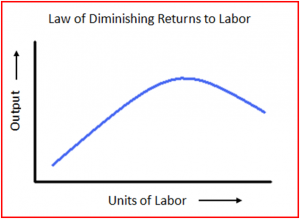

Once the entrepreneur signs the lease, he or she is stuck in the building until the lease expires. In the pizza example, the building is a fixed input. We can describe inputs as either fixed or variable.įixed inputs are those that can’t easily be increased or decreased in a short period of time. A sit-down pizza restaurant probably uses more labor (to handle table service) than a purely take-out restaurant. One pizza restaurant may make its own dough and sauce, while another may buy those pre-made. Firms in the same industry may have somewhat different production functions, since each firm may produce a little differently. The amount of labor a farmer uses to produce a bushel of wheat is likely different than that required to produce an automobile. Different products have different production functions. The production function gives the answer to the question, how much output can the firm produce given different amounts of inputs? Production functions are specific to the product. We can summarize the ideas so far in terms of a production function, a mathematical expression or equation that explains the engineering relationship between inputs and outputs: Let’s explore these ideas in more detail. The cost of producing pizza (or any output) depends on the amount of labor capital, raw materials, and other inputs required and the price of each input to the entrepreneur. Who makes those decisions? Ultimately, it is the entrepreneur, the person who creates the business, whose idea it is to combine the inputs to produce the outputs. Entrepreneurship – Production involves many decisions and much knowledge, even for something as simple as pizza.How does the pizzaiolo combine ingredients to make pizza? How hot should the oven be? How long should the pizza cook? What is the best oven to use? Gas or wood burning? Should the restaurant make its own dough, sauce, cheese, toppings, or should it buy them?

Technology – Technology refers to the process or processes for producing the product.In the case of pizza, the capital includes the peel, the oven, the building, and any other necessary equipment (for example, tables and chairs). Capital – When economists uses the term capital, they do not mean financial capital (money) rather, they mean physical capital, the machines, equipment, and buildings that one uses to produce the product.The business may also have one or more people to work the counter, take orders, and receive payment.
#DIMINISHING MARGINAL RETURNS HOW TO#
He or she needs to be strong enough to roll out the dough and to insert and retrieve the pizza from the oven, but he or she also needs to know how to make the pizza, how long it cooks in the oven and a myriad of other aspects of pizza-making. The pizzaiolo was the primary example of labor here.

If, instead of pizza, we were looking at an agricultural product, like wheat, we would include the land the farmer used for crops here. If the establishment heats the oven with natural gas, we would count this as a raw material. If the pizza place uses a wood-burning oven, we would include the wood as a raw material. These include the flour, yeast, and water for the dough, the tomatoes, herbs, and water for the sauce, the cheese, and the toppings.

Once baked, the pizza goes into a box (if it’s for takeout) and the customer pays for the good. The pizzaiolo uses a peel-the shovel-like wooden tool-to put the pizza into the oven to cook. The cook rolls out the dough, brushes on the pizza sauce, and adds cheese and other toppings. Similarly, the pizzaiolo may take tomatoes, spices, and water to make pizza sauce. The pizzaiolo (pizza maker) takes flour, water, and yeast to make dough. the goods or services the firm wishes to sell. labor, capital, raw materials) into outputs, i.e. Production is the process (or processes) a firm uses to transform inputs (e.g. (Credit: Haldean Brown/Flickr Creative Commons) Figure 7.3 The production process for pizza includes inputs such as ingredients, the efforts of the pizza maker, and tools and materials for cooking and serving.


 0 kommentar(er)
0 kommentar(er)
